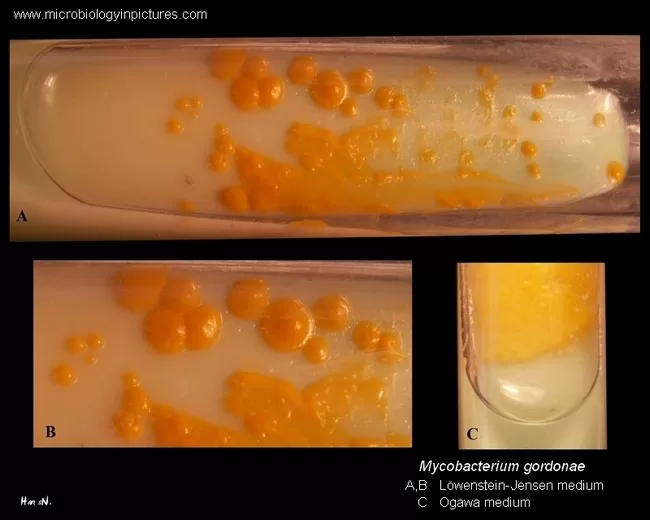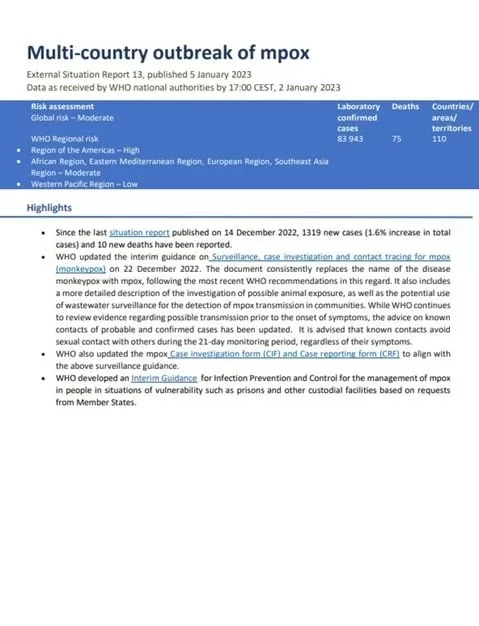Scotochromogenic bacteria are intriguing microorganisms known for their distinctive pigmentation patterns that develop even in the absence of light. This unique trait, derived from the Greek terms for darkness and color, offers these bacteria notable advantages regarding microbial fitness. Often categorized within the group of nontuberculous mycobacteria, scotochromogenic species like Mycobacterium szulgai and M. scrofulaceum play important roles in various ecological and clinical contexts. Their ability to produce pigmentation without light not only defines their classification in bacteriology but also hints at complex evolutionary adaptations. Understanding scotochromogenic bacteria enhances our knowledge of mycobacterium pigmentation and its implications for treatment and disease management.
The fascinating world of scotochromogenic microorganisms encompasses a range of slow-growing nontuberculous mycobacteria, which are distinguished by their light-independent color production. These bacteria demonstrate a remarkable capacity to adapt to their environments, showcasing their evolutionary resilience and microbial fitness. The pigmentation traits observed in these organisms suggest intricate biochemical pathways that may have implications for their virulence and interactions with other species. Through the lens of bacteriology classification, scotochromogens offer a window into the diversity of mycobacterial life forms and their ecological significance. Investigating these unique bacteria not only furthers our understanding of their role in nature but also informs medical research into related infections.
Understanding Scotochromogenic Bacteria
Scotochromogenic bacteria are an intriguing group of microorganisms within the extensive classification of nontuberculous mycobacteria. These bacteria are distinct in their ability to produce pigment even in the absence of light, a trait that allows them to thrive in various environments. Their name, derived from Greek roots, reflects their characteristic dark pigmentation, which has significant ecological implications. Understanding the biology of scotochromogenic bacteria is crucial for microbiologists, as it reveals insights into their adaptive strategies and roles in ecosystems.
The classification of scotochromogenic bacteria as part of Group II nontuberculous mycobacteria is central to bacteriology. Notably, members like Mycobacterium szulgai and M. scrofulaceum illustrate the diversity of this group. Their ability to grow slowly yet develop robust pigmentation without light exposure indicates a level of microbial fitness that can be advantageous in pathogenic or competitive environments. Such characteristics not only highlight their resilience but also suggest potential implications for human health, as some strains can be opportunistic pathogens.
The Pigmentation Mechanism in Mycobacterium Species
Mycobacterium pigmentation is a fascinating phenomenon closely linked to the survival and adaptability of scotochromogenic bacteria. The pigments, which contribute to the distinctive colors of colonies, are believed to play multiple roles, including protection against environmental stresses and enhancing antimicrobial properties. This pigmentation process is an example of how microbial organisms have evolved complex biochemical pathways to improve their fitness in diverse habitats, making them capable of outlasting competitors in nutrient-limited conditions.
Research into the mechanisms of pigmentation within mycobacteria not only elucidates how these bacteria manage to thrive in various conditions but also informs public health initiatives aimed at managing infections associated with these organisms. The presence of pigments may correlate with virulence factors that complicate treatment options for infections such as those caused by M. scrofulaceum. Understanding these pigmentation pathways can lead to advanced diagnostic techniques and targeted therapeutic strategies, thereby mitigating risks associated with nontuberculous mycobacterial infections.
Role of Scotochromogenic Bacteria in Ecosystems
Scotochromogenic bacteria play a significant role in their ecosystems, where their unique pigmentation and metabolic capabilities influence microbial community dynamics. As part of nontuberculous mycobacteria, these organisms contribute to nutrient cycling and the degradation of organic materials, which is essential for ecosystem health. Their ability to survive in harsh conditions allows them to inhabit various substrates, from soil and water to more complex organic matter, showcasing their environmental versatility.
Moreover, the antimicrobial properties associated with the pigments produced by scotochromogenic bacteria may provide them with an added advantage in competitive environments. These bacteria can regulate their pigment production in response to environmental stresses, allowing them to establish dominance and influence the microbial landscape. Understanding these interactions not only helps in appreciating microbial ecology but also in grasping how these bacteria can impact human health alongside their ecological roles.
Infection Risks and Public Health Implications
While scotochromogenic bacteria enhance microbial fitness and ecological resilience, they also pose potential risks for human health, particularly in immunocompromised individuals. Bacteria such as Mycobacterium scrofulaceum can lead to opportunistic infections, underscoring the importance of monitoring these organisms in clinical settings. Awareness of their role in infections can guide healthcare providers in recognizing symptoms and managing potential opportunistic cases.
The intersection between bacteriology and public health becomes crucial when considering how scotochromogenic bacteria can be spread in communal environments, where they may thrive in water and soil. Public health initiatives must incorporate education about these bacteria to mitigate the risks they pose. Surveillance efforts to monitor their prevalence and impacts on health, especially in vulnerable populations, are essential for preventing future outbreaks and ensuring community safety.
Bacteriology Classification of Nontuberculous Mycobacteria
The bacteriology classification of nontuberculous mycobacteria is complex and multifaceted, reflecting the diversity of traits exhibited by these organisms. Grouping them into categories such as slow-growing scotochromogens allows for a more structured understanding of their behaviors and interactions. This classification reveals connections between their growth rates, pigmentation patterns, and ecological niches, ultimately assisting in the identification and treatment of infections caused by these bacteria.
Additionally, an accurate classification of nontuberculous mycobacteria is vital for integrating research findings into clinical practice. By establishing clear relationships among different species within this group, researchers can propose hypotheses related to their pathogenicity, resistance to treatment, and overall impact on public health initiatives. Consequently, the classification serves as a foundation for future studies focusing on therapeutic developments and environmental considerations.
Microbial Fitness and Adaptation Strategies
Microbial fitness is a critical attribute of scotochromogenic bacteria, which equips them with the ability to adapt and thrive under various environmental pressures. The adaptive strategies employed by these organisms, such as their unique pigmentation, enhance their resilience and competitive advantage in natural habitats. By efficiently utilizing available resources, they ensure their continued survival, even when faced with hostile conditions that may stifle the growth of less adaptable microorganisms.
In the broader context of microbial ecology, the concept of fitness among bacteria underscores the ongoing evolutionary arms race between pathogens and hosts. Scotochromogenic bacteria exemplify this dynamic, having evolved mechanisms that allow them to survive and flourish in environments that may not always be favorable. The traits that contribute to their fitness reinforce the necessity for ongoing research to understand the implications of these adaptations on public health and microbial interactions.
Historical Contributions to Bacteriology
The study of scotochromogenic bacteria has evolved significantly, owing much to pioneering figures in the field, such as Dr. Ruth Evelyn Gordon. Her contributions to the classification of rapidly growing acid-fast bacteria have paved the way for a deeper understanding of nontuberculous mycobacteria and their various characteristics. These historical insights inform current research and clinical practices and highlight the importance of foundational studies in shaping modern bacteriology.
As our understanding of microbial classification has progressed, researchers continue to build upon legacy findings, delving into the complexities of bacterial adaptation and pathogenicity. Recognizing the contributions of past scientists reinforces the continuity of knowledge necessary for addressing contemporary challenges posed by these bacteria. Their work serves as a reminder of the intricate relationships between science and health, illustrating how historical perspectives can enhance current methodologies in understanding microbial life.
Challenges in Diagnosing Scotochromogenic Infections
Diagnosing infections caused by scotochromogenic bacteria presents unique challenges due to their slow growth and the initial non-specific symptoms they may produce. Health professionals must be vigilant and utilize specialized techniques to isolate and identify these organisms, which may not always be evident in routine laboratory tests. This complexity often necessitates advanced diagnostic tools and a deep understanding of the bacterial characteristics, including their pigmentation and growth patterns.
Awareness of the challenges associated with scotochromogenic bacteria is essential for optimizing patient management. Clinicians should be prepared to consider these organisms when patients display symptoms of respiratory or systemic infections, particularly in immunocompromised individuals. Incorporating a thorough patient history and understanding the ecological niches of these bacteria can help improve diagnosis and treatment outcomes, ultimately contributing to better patient care.
Future Directions in Scotochromogenic Bacteria Research
Future research into scotochromogenic bacteria is poised to advance our understanding of their roles in human health and environmental microbiology. Integrating new molecular techniques and bioinformatics can reveal hidden dynamics within their genomic structures, advancing the classification and characterization of these unique organisms. By exploring the evolutionary mechanisms behind their pigmentation and environmental adaptations, researchers can uncover novel insights that may offer therapeutic avenues against related infections.
Furthermore, a proactive approach to studying scotochromogenic bacteria will help anticipate their responses to changing environmental conditions, particularly in light of global climate changes. Research efforts can focus on their potential epidemiological impacts and how these microorganisms adapt in shifting ecosystems. By prioritizing these studies, scientific communities can enhance public health readiness and effectively mitigate risks associated with nontuberculous mycobacteria.
Frequently Asked Questions
What are scotochromogenic bacteria and how are they classified in bacteriology?
Scotochromogenic bacteria are a group of nontuberculous mycobacteria that produce pigmentation in the absence of light. They fall under Group II of the bacteriological classification proposed by Ernest Runyon in 1959. This classification is based on growth rates, pigmentation, and colony morphology, with slow-growing scotochromogens exhibiting distinct dark pigmentation.
How do scotochromogenic bacteria contribute to microbial fitness?
Scotochromogenic bacteria enhance microbial fitness by utilizing their dark pigmentation as a protective mechanism. The pigmentation offers potential advantages such as acting as antimicrobial agents, antioxidants, and virulence factors, helping these bacteria survive in various environmental conditions.
What is the significance of mycobacterium pigmentation in scotochromogenic bacteria?
Mycobacterium pigmentation in scotochromogenic bacteria is significant as it indicates their ability to thrive without light, which is a unique characteristic. This pigmentation may play roles in environmental adaptability, survival, and interactions with other organisms, thereby enhancing the bacteria’s overall fitness.
What are some common species of scotochromogenic bacteria?
Common species of scotochromogenic bacteria include Mycobacterium szulgai, M. scrofulaceum, and M. gordonea. These species are part of the slow-growing nontuberculous mycobacteria that exhibit the distinctive scotochromogenic trait, which is their ability to produce pigmentation without light.
Can scotochromogenic bacteria be pathogenic, and what are their clinical implications?
Yes, scotochromogenic bacteria can be pathogenic, especially in immunocompromised individuals. While they are primarily environmental organisms, some species like M. scrofulaceum are known to cause infections. Understanding these bacteria’s characteristics is crucial for clinical diagnosis and treatment of related infections.
What research has contributed to the understanding of scotochromogenic bacteria?
Research by bacteriologists such as Professor Ruth Evelyn Gordon has significantly contributed to the understanding and classification of scotochromogenic bacteria and other rapidly growing acid-fast bacteria. Their work has helped refine the nomenclature and relationships among different mycobacterial species, enhancing our overall knowledge in the field of bacteriology.
| Key Point | Description |
|---|---|
| Definition | Scotochromogenic bacteria are those that produce pigmentation in the absence of light. |
| Etymology | The term derives from Greek, with ‘σκότος’ meaning darkness, ‘χρῶμα’ meaning color, and ‘γενής’ referring to kind. |
| Ecological Role | Their dark pigmentation may serve as antimicrobial agents, antioxidants, or virulence factors, enhancing their survival. |
| Classification History | In 1959, Ernest Runyon classified nontuberculous mycobacteria, and Group II includes slow-growing scotochromogens. |
| Common Species | Examples include Mycobacterium szulgai, M. scrofulaceum, and M. gordonea. |
| Key Contributor | Professor Ruth Evelyn Gordon significantly advanced the classification of acid-fast bacteria. |
| Funding and Ethics | The research received ethical approval and funding from multiple sources. |
Summary
Scotochromogenic Bacteria are significant organisms characterized by their ability to develop pigmentation in darkness. These bacteria have various ecological roles, primarily attributed to their pigmentation which may enhance their survival and adaptability in different environments. Understanding the characteristics and classifications of scotochromogenic bacteria can aid researchers in microbiology, your comprehension of biodiversity, and the implications these organisms have in health and ecology.
The content provided on this blog (e.g., symptom descriptions, health tips, or general advice) is for informational purposes only and is not a substitute for professional medical advice, diagnosis, or treatment. Always seek the guidance of your physician or other qualified healthcare provider with any questions you may have regarding a medical condition. Never disregard professional medical advice or delay seeking it because of something you have read on this website. If you believe you may have a medical emergency, call your doctor or emergency services immediately. Reliance on any information provided by this blog is solely at your own risk.








